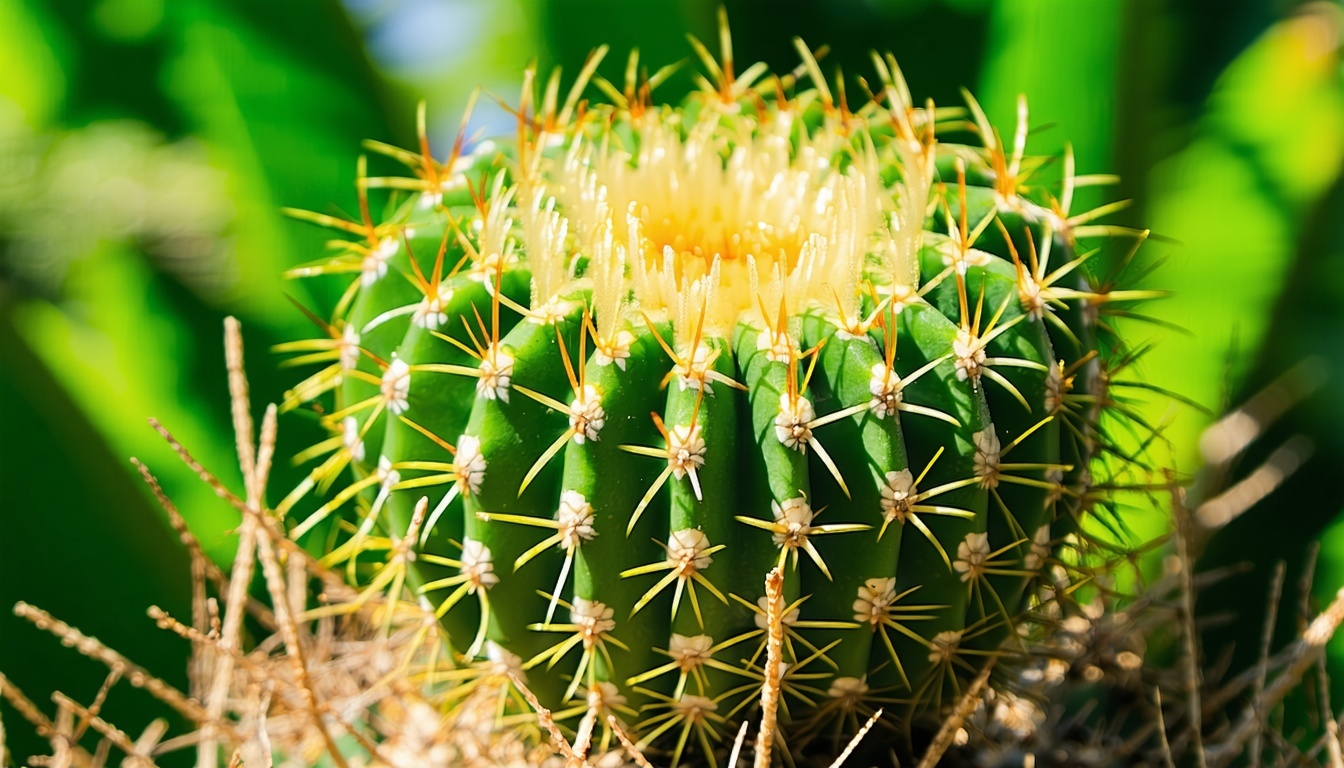
Unlock the secrets to thriving cacti by understanding their light needs and how to optimize them for robust growth.
Intro - The Importance of Light for Cactus Health
Cacti are known for their resilience and ability to thrive in harsh conditions, but one key factor that can significantly affect their growth is light. Proper lighting is essential for photosynthesis, which allows your cactus to convert light into the energy it needs to grow. Without adequate light, your cactus may become weak and grow unevenly, often resulting in a crooked or lopsided appearance.
Understanding and providing the correct light conditions for your cactus can ensure it grows strong and healthy, maintaining its natural shape and beauty.
Understanding Different Types of Light
Not all light is created equal when it comes to cactus care. There are two main types of light to consider: direct sunlight and indirect sunlight. Direct sunlight means the sun's rays hit the cactus directly, which is often ideal for most cacti. Indirect sunlight, on the other hand, is light that bounces off other surfaces before reaching the plant, which can be sufficient for some species but not all.
Additionally, consider the intensity and duration of light. Bright, intense light for a few hours a day might be better for some cacti than a full day of weak, indirect light. Understanding these nuances can help you provide the best conditions for your cactus.
How Much Light Does Your Cactus Need?
Most cacti are sun-loving plants that thrive in bright, direct sunlight for at least 6 hours a day. This light exposure mimics their natural desert habitat. However, some cacti species, especially those that naturally grow under the shade of rocks or other plants, may require less intense light and can do well with bright but indirect sunlight.
If you're growing your cactus indoors, placing it near a south-facing window is usually the best option. For outdoor cacti, ensure they are placed in a location where they receive ample sunlight but are also protected from extreme conditions.
Signs Your Cactus is Getting Too Much or Too Little Light
Too much light can cause your cactus to become sunburned, showing signs like brown, scorched patches on its surface. On the other hand, too little light can lead to etiolation, where the cactus becomes elongated and pale as it stretches towards the light source.
Other signs of insufficient light include slow growth, a lack of flowering, and a generally weak or spindly appearance. Monitoring these signs can help you adjust the lighting conditions to better suit your cactus's needs.
Tips for Providing Optimal Light to Indoor and Outdoor Cacti
For indoor cacti, the best practice is to place them near a window that receives plenty of sunlight, preferably south-facing. If natural light is insufficient, consider using grow lights that can provide the necessary light spectrum for healthy growth.
Outdoor cacti should be placed in a sunny spot where they can enjoy direct sunlight for a significant part of the day. However, also ensure they have some protection from extreme midday sun, which can be too harsh. Using shade cloths or placing them near taller plants can offer some relief during the hottest part of the day.
Frequently Asked Questions on Light for Cactus
Q: Can my cactus survive in low light conditions?
A: While some cacti can tolerate low light for short periods, they generally need bright light to thrive. Prolonged low light conditions can lead to poor growth and health issues.
Q: How do I know if my cactus is getting the right amount of light?
A: Regularly check for signs of too much or too little light, such as changes in color, growth patterns, and overall health. Adjust the cactus's position as needed to ensure it receives optimal light.
Q: Can artificial light be used for growing cacti?
A: Yes, artificial grow lights can effectively supplement natural light, especially in indoor settings. Ensure the lights provide the full spectrum of light that mimics natural sunlight for the best results.
Q: What type of artificial light is best for cacti?
A: LED grow lights are often recommended as they are energy-efficient and can provide the full spectrum of light needed for healthy cactus growth.
Q: How far should my cactus be from a grow light?
A: Generally, placing your cactus about 12 to 18 inches away from the grow light is ideal, but this can vary based on the light's intensity and the specific needs of your cactus.
Q: Can cacti get sunburned indoors?
A: Yes, if placed too close to a window with intense sunlight, cacti can get sunburned. It's important to monitor their exposure and adjust as necessary.
Q: How can I acclimate my cactus to more light?
A: Gradually increase the light exposure over a few weeks to help your cactus adjust without stress. Start with indirect light and slowly move it to a brighter spot.
Q: Is it possible to overwater a cactus if it gets too much light?
A: Yes, even with ample light, overwatering can occur. Ensure the soil dries out completely between waterings to prevent root rot.
Q: Do cacti need different light in winter?
A: During winter, cacti may require less light as they enter a dormant phase. However, maintaining some light exposure is still important for their health.
Q: Can I use a regular lamp for my cactus?
A: Regular lamps may not provide the full spectrum of light needed for optimal growth. It's best to use a grow light designed for plants.



